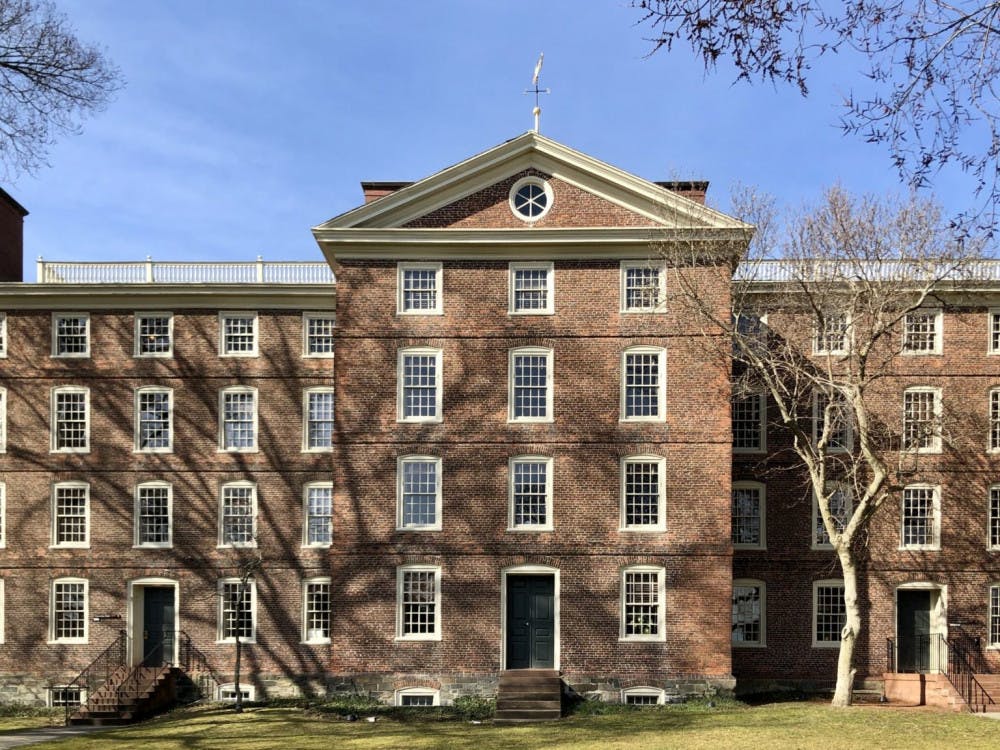The University has formed a Land Acknowledgement Working Group, President Christina Paxson P’19 wrote in a March 11 letter to the Brown community. The new group will develop recommendations as to how the University should formally acknowledge the shared history of the institution and the local Indigenous Peoples.
Russell Carey ’91 MA’06, executive vice president for planning and policy, and Rae Gould, associate director of the Native American and Indigenous Studies Initiative, will chair the working group. Graduate and undergraduate students, along with other faculty and staff, will comprise the group membership. Each of these individuals “have personal and professional experience and expertise to bring to this topic,” Carey said.
The group will function in consultation with local Native and Indigenous Peoples, as well as members of NAISI — an interdisciplinary initiative of Brown community members which centers upon teaching and research to explore the cultural and political experiences of Indigenous Peoples.
“It's really a priority and something consistent with the Diversity and Inclusion Action Plan, and to really care for the institution to be intentional about understanding and respecting the land on which (the University is) based,” Carey said. The group wants “to do so in a manner that is really respectful and cognizant of the … Indigenous people and tribes in our area.”
Gould further elaborated on the University’s commitment to Indigenous involvement in achieving the group’s goals. One central aim is to “engage with and learn from the tribes,” Gould wrote in an email to The Herald.
The group will be “focused on following protocols to respect the knowledge, interests and concerns of the local tribal people connected to this place we now know as Providence and College Hill,” Gould added. “We are committed to dedicating the time needed to engage in the process fully and respectfully.”
The group will hold its first meeting at the end of the month and is responsible for producing an interim status report by the end of the calendar year.
Beyond these parameters, there is no specific timeline set regarding when other meetings will take place or when certain topics will be discussed. “As a critical piece of this work is to do it in consultation with the tribes and Indigenous people, … it’s not necessarily our timeline to establish,” Carey said. “Gould and I are both committed to taking the time that’s necessary.”
Land acknowledgements are meant to serve as historically accurate ways to recognize the Indigenous land on which an institution sits. They are often presented verbally or visually — in signage, theater presentations or simple spoken-word greetings — prior to academic, civic, sporting and other university events.
The group will also have to consider logistics about the form of the University’s eventual land acknowledgement, and how and when it will be used, Carey explained. The University will likely look to other higher-education institutions that have already begun the effort towards creating land acknowledgements, alongside the numerous organizations on campus that have already established acknowledgements. The John Nicholas Brown Center for Public Humanities and Cultural Heritage, for instance, has already created a land acknowledgement statement.
The group’s formation is a continuation of the University’s recent efforts to create “a more fully diverse and inclusive Brown,” Paxson wrote in the letter.
Gould emphasized a dedication to diversifying the University’s academics as a key part of NAISI’s work in recent months. The initiative also includes outreach to local tribes and the establishment of a Tribal Advisory Council that contributes to a number of efforts at the University, as well as the eventual development of a critical Native American and Indigenous Studies concentration.
“We are really looking forward to next year and to bringing some of the most respected (Native American and Indigenous Studies) scholars to campus to share their knowledge and experience,” Gould wrote.
The group will be closely tied to these other initiatives along with the second phase of DIAP, which will launch later this year.
Community members hope that the formation of the group marks the beginning of a movement, rather than the end.
“Creating the Land Acknowledgement Working Group and working with the Indigenous community is a great step forward for Brown as they take accountability for their colonialistic actions that built their foundation,” Leinani Roylo ’21, who conducted a NAISI project focused on increasing Native Hawaiian voter turnout, wrote in an email to The Herald. “However, much more needs to be done in order to rectify their detrimental actions and also uplift the Native American community.”
Roylo recommends that the University examine its impact beyond just the land Brown sits on. “A longer and more serious conversation needs to be had with the Narragansett tribe and other Native students and faculty to address what reparations and accommodations should be made for the Native communities Brown is tied to.”

Alex Nadirashvili was the managing editor of multimedia and social media for The Brown Daily Herald's 133rd Editorial Board. As a former University News editor, he covered faculty, higher education and student life, though his proudest legacy is The Brown Daily Herald TikTok account.





